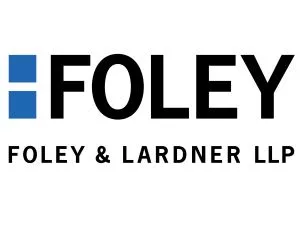- within Intellectual Property topic(s)
- in United States
- within Government, Public Sector, Insurance and Coronavirus (COVID-19) topic(s)
Properly pleading a federal claim for trade secret misappropriation can be a tricky endeavor. Since the Defend Trade Secrets Act (DTSA) was enacted in 2016, many federal courts have required plaintiffs to identify their alleged trade secrets at the pleading stage, despite there being no express requirement to do so in the DTSA. Specifically, courts wanted trade secrets plaintiffs to identify their trade secrets, either in the complaint or in a separate disclosure, in such a way that the court and the defendant can tell what the alleged trade secrets are before starting discovery.
There are practical reasons for this. First, a plaintiff should know what their trade secrets are before suing. Second, the court cannot accurately decide whether a plaintiff has met its pleading burden without first understanding what is asserted as a trade secret. Third, without an understanding of what it is the defendant is accused of misappropriating, the court cannot properly scope out discovery as contemplated by Rule 26.
The thing that makes meeting this particularity standard somewhat of a challenge in federal court is that the level of specificity and the timing of the disclosure varies dramatically not only between federal circuits, but within them. This inconsistency in the federal courts is highlighted by two recent and conflicting appellate decisions from the Fourth and Ninth Circuits.
In July, the Fourth Circuit ruled that trade secrets must be identified with "sufficient particularity" (an exacting standard) in order to survive a motion to dismiss. Sysco Mach. Corp. v. DCS USA Corp., 143 F.4th 222 (4th Cir. 2025). Then in August, the Ninth Circuit came to the opposite conclusion—that federal trade secret plaintiffs are not required to identify their trade secrets with particularity before beginning discovery. Quintara Biosciences, Inc. v. Ruifeng Biztech Inc., No. 23-16093, 2025 WL 2315671 (9th Cir. Aug. 12, 2025).
These decisions reveal a deepening circuit split on the timing and specificity of trade secret identification. Until and unless Congress or the U.S. Supreme Court intervenes, trade secret holders will need to carefully consider their strategic approach in terms of what claims to bring and where. Likewise, trade secret defendants will need to be mindful of where and when they demand particularity as a condition of moving forward with discovery.
The Sysco & Quintara Decisions
Sysco Machinery Corporation is a Taiwanese manufacturer of industrial cutting machines. In 2021, several Sysco employees secretly formed their own company, Cymtek, that competed directly with Sysco. After Cymtek was formed, other Sysco employees with access to Sysco's trade secrets and other confidential information defected to Cymtek. Sysco alleges it later discovered electronic records showing that these former employees copied and stole Sysco's trade secrets and confidential information. In 2023, after three aborted attempts to sue both Cymtek and DCS (once in Taiwan and twice in U.S. district courts), Sysco brought suit in the Eastern District of North Carolina naming only DCS as a defendant. Sysco's claims included misappropriation of trade secrets under the DTSA and North Carolina's Trade Secrets Protection Act (TSPA). Specifically, Sysco alleged that Cymtek used Sysco's trade secrets and confidential information to steal Sysco's customers and that DCS assisted in that effort. DCS moved to dismiss for failure to state a claim. The district court granted the motion, in part, because Sysco's identification of its alleged trade secrets lacked the specificity required to plead a claim for misappropriation under both federal and state law. Sysco appealed the lower court's decision to the Fourth Circuit, arguing that both the DTSA and TSPA only require notice pleading of the alleged trade secrets.
The Fourth Circuit squarely rejected this argument, stating explicitly that a trade secret plaintiff must identify its trade secrets with "sufficient particularity" at the pleading stage, so that "a defendant [can] delineate that which he is accused of misappropriating," Sysco Mach. Corp. v. DCS USA Corp., 143 F.4th 222, 228 (4th Cir. 2025). The Sysco court further explained that requiring sufficient particularity at the outset enables the court "to determine whether the plaintiff has plausibly satisfied the reasonable secrecy and independent economic value requirements" of the DTSA. Id. Seizing on the fact that Sysco identified its trade secrets three different ways in three different portions of its compliant and that Sysco include copyrighted materials in its identification (by definition, incapable of being trade secrets because of their public nature), the court affirmed the lower court's dismissal, noting that "[n]either the defendant nor the court should be forced into a fishing expedition to find evidence of a valid trade secret in the pleadings." Id.
In August, the Ninth Circuit came to a very different conclusion. In Quintara v. Ruifeng, the Ninth Circuit found that a plaintiff bringing DTSA claims need not identify their trade secrets with particularity before beginning discovery. In so doing, the Ninth Circuit reversed a district court struck many of the plaintiff's alleged trade secrets (functionally dismissing them from the case) for failure to meet the "reasonable particularity" standard contained in the California Uniform Trade Secrets Act (CUTSA), which requires a plaintiff to "identify the trade secret with reasonable particularity" "before commencing discovery," even though the claims were brought under the DTSA. No. 23-16093, 2025 WL 2315671 (9th Cir. Aug. 12, 2025). In effect, the Ninth Circuit said that the CUTSA reasonable particularity standard—or any other similar rule—does not apply in federal court. The Ninth Circuit went on to explain that the federal standard is more flexible and the particularity question is a fact issue for later stages of the case.
In short, the Fourth Circuit has adopted what amounts to a heightened pleading standard for trade secret claims in federal court. Notably, in adopting that standard, the Fourth Circuit read the applicable state and federal trade secret statutes together. Sysco at228 ("The DTSA and North Carolina's TSPA define a trade secret in substantially the same terms."). The Ninth Circuit, on the other hand, emphasized the differences between state and federal laws and emphasized that there is not a statutory requirement to identify trade secrets prior to discovery in the DTSA.
Practical Impact
Trade secret plaintiffs should carefully consider their venue and whether to bring state law and / or federal claims, and ensure that they comply with the local requirements in their chosen forum. Defendants will need to pick their battles in attacking a plaintiff's description of its alleged trade secrets. Perhaps in jurisdictions that do not require early identification of trade secrets, we'll see a focus on pleading standards versus discovery rules, or early summary judgment motions to challenge the sufficiency of a plaintiff's trade secret identification.
The content of this article is intended to provide a general guide to the subject matter. Specialist advice should be sought about your specific circumstances.



